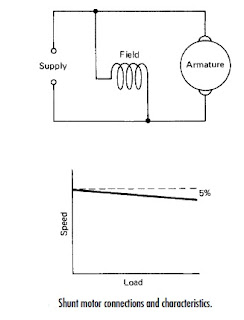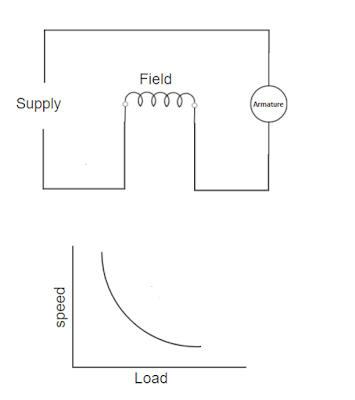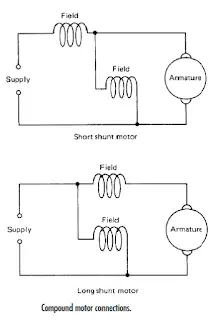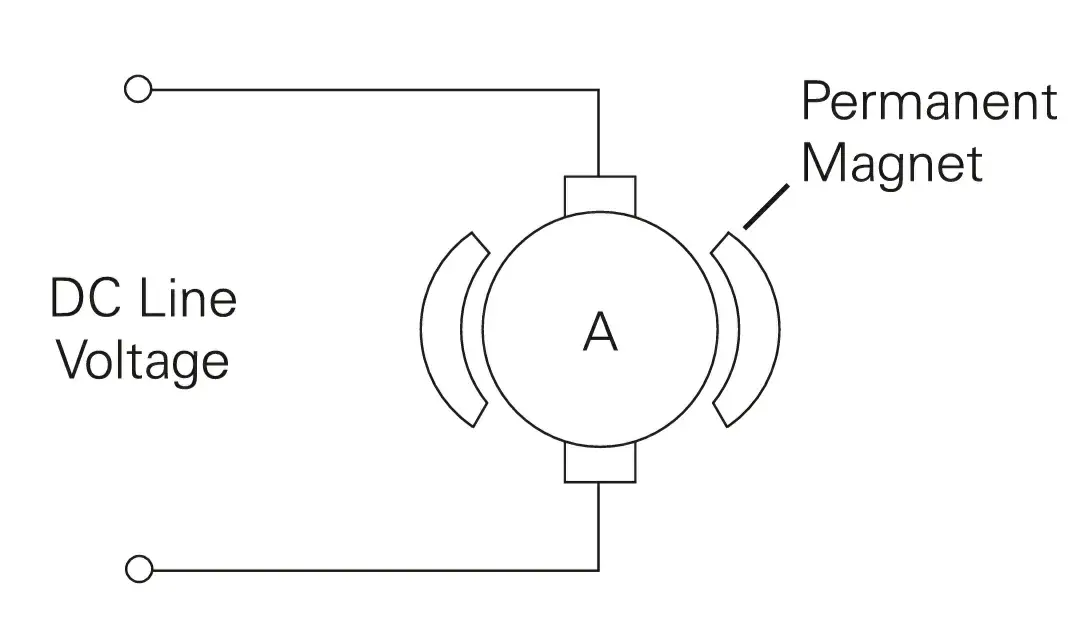Types of DC motor shunt, series and compound motor- diagram, characteristics, Applications
Types of DC motors are given as below :
- Permanent magnet DC motor
- Shunt dc motor
- Series DC motor
- Compound dc motor
Permanent magnet DC motor:
Shunt motor and its characteristics
Diagram:
 |
|
DC Shunt motor and characteristics
|
In DC shunt motor, the field winding is connected parallel to the armature. as shown in the above diagram. The DC shunt motor is used where speed regulation is very important.
Self-excited Field:
In this type of Dc motor field winding is connected in parallel i.e shunt with the armature winding on the same supply. Changing the field current can vary the speed of the dc motor. Torque is directly proportional to armature current of motor.
This dc motor can also behave as a generator. To reduce the high starting current of the motor drive apply the voltage in the ramp to motor. For this motor, a variable resistor called rheostat is connected in series with the field circuit to change the flux value and the speed by a small amount.
Separately excited:
In this type of Dc motor field winding is connected in parallel (shunt) with the armature winding of motor with separate excitation.
Torque is proportional to armature current. In a separately excited shunt motor, speed can be varied up to a certain limit by changing armature voltage. After that using field weakening (reducing field current), it is possible to increase the speed of motor above base speed.
Application:
DC Series motor:
Diagram:
 |
|
|
As the name suggests in dc series motor, the field winding is connected in series with the armature winding. Naturally, the heavy current will pass through it; hence field winding of a thicker gage is used. A DC series motor is used where speed regulation is not important. dc series motor diagram and torque characteristics are shown in the above picture.
The main advantage of this dc series motor is that a high torque can be obtained, which makes it useful for applications such as diesel locomotives, cranes, etc.
The relationship between Torque and current is as follows:
Ta ∝ ɸ.Ia
It is important to start this motor in a loaded condition otherwise it could lead to damage of the motor and its surroundings.
Application:
Compound dc motor:
 |
|
|
If we combine both series and shunt dc motors then we will have a compound motor. This combines the good features of both types such as high torque characteristics of a dc series motor and the speed regulation of a dc shunt motor. Diagram of dc compound motor is shown in the above image.
